Visit an Alaskan stream during the salmon spawn, and there’s a party going on. At least that’s the way it looks to human observers.
Both above and below the surface, predators are feasting in an orgy of excess on eggs and the spawned-out carcasses of salmon, perhaps the world’s largest tailgate and spring break party rolled into one.
But when the spawn is gone, so is the food.
On Alaskan salmon streams, it’s feast and famine. Every year.
How do animals adapt to a huge glut of food, followed by an almost-complete absence? New research has found some intriguing answers – answers that happen to have important implications for conservation.
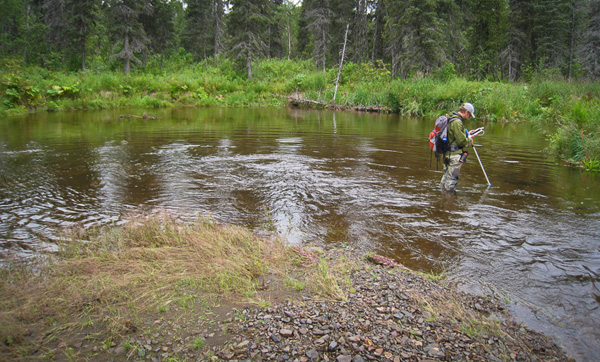
“Animals exhibit a wide variety of tactics to live in a world of feast or famine,” says Jonny Armstrong, a David H. Smith Conservation Research Fellow at the University of Wyoming.
Armstrong has led or been involved with several research projects looking at how wildlife species cope with these feast and famine cycles.
His work gives a glimpse into the complexity and wildness of a salmon stream. Here are how some animals cope.
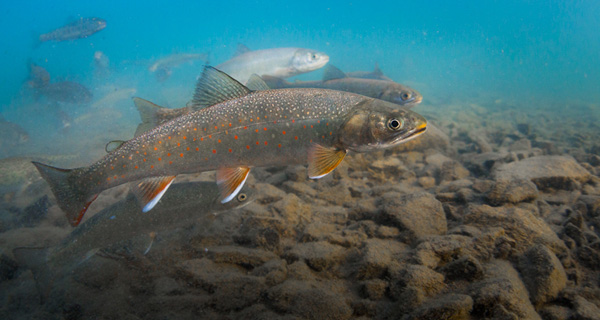
Char: The Yo-Yo Diet
Go fishing in southern Alaska, and you’ll often see dozens of Dolly Varden char stacked in crystal-clear water.
Crystal-clear water with no apparent prey.
Until the salmon arrive.
Then it’s full-on, crazy, binge-‘til-you-bust feasting for the char. The stuff of an angler’s dreams.
“They are totally egg-crazed,” says Armstrong. “Their stomachs are packed with eggs. They are beaten up and scratched from duking it out with salmon.”
The salmon die. The char remain. What do they eat the rest of the year? After all, these fish have large bodies to feed. Large stomachs require a lot of energy to maintain.
“If you do the energy calculations and the amount of food in the watershed most of the year, you quickly see they shouldn’t be able to survive there year round,” says Armstrong. “But they do.”
Armstrong and his colleague Morgan Bond found an intriguing physiological answer to the question, one that at a casual glance appears to run counter to what you learned in freshman biology class.
You may remember Lamarck, who believed that giraffes grew longer necks to reach higher in trees. Of course, Lamarck was wrong. Animals don’t grow larger appendages.
It’s different for digestive organs. Char do indeed shrink and grow their digestive tract to fit the food supply. During the salmon migration, the char’s digestive organs grow twice as big as they are the rest of the year. Biologists call this phenotypic flexibility.
“Animals can rapidly change their phenotypes to meet changes in food supply, and it’s reversible,” says Armstrong. “It’s been well documented in birds, reptiles and small mammals. We documented it in fish.”

Smaller char migrate to the ocean, but large char remain in the streams year round, living their starvation diet.
The researchers found that char atrophy and shrink their metabolic organs when the food wasn’t there, so they wouldn’t have to “pay” for them.
In other words: Char spend most of the year in starvation mode, with a small digestive tract and low caloric needs. When the salmon arrive, their organs increase. Game on.
What it means for conservation: This one’s simple. There is very, very little to eat in Southeast Alaska streams until the salmon show. No salmon, no char.
But just having lots of salmon may not be enough in every case…
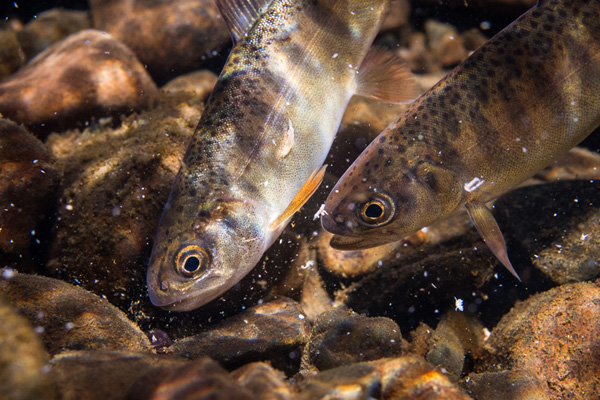
Coho Salmon: The Thanksgiving Model
You know that stereotypical Thanksgiving? The one where you stuff yourself on all the fixings, then spend the rest of the day in a haze in front of a football game?
Juvenile coho salmon do that too. Really, they do.
When sockeye salmon spawn, the juvenile coho salmon – finger-length fish – are there to gorge.
“They look like they might explode,” says Armstrong. “You can feel the lumps of the eggs in their stomachs.”
There’s one complicating factor. Sockeye salmon prefer to lay eggs in areas with upwelling groundwater, which means cold stream temperatures. But cohos need warmer temps to digest food.
“Those colder water temperatures seriously constrain a fish’s abilities to digestively process food,” says Armstrong.
The solution? The cohos gorge, then retire to a warmer stretch of stream to digest their gigantic meal. There, they congregate in schools as they lethargically rest: the Thanksgiving football game.
That’s what Armstrong and Daniel Schindler found while conducting field research in the Wood River watershed of Bristol Bay.
The coho salmon will move to the nearest warm water. That might mean a little flooded side channel. It might mean the upper inch of the water column, warmed by the sun.
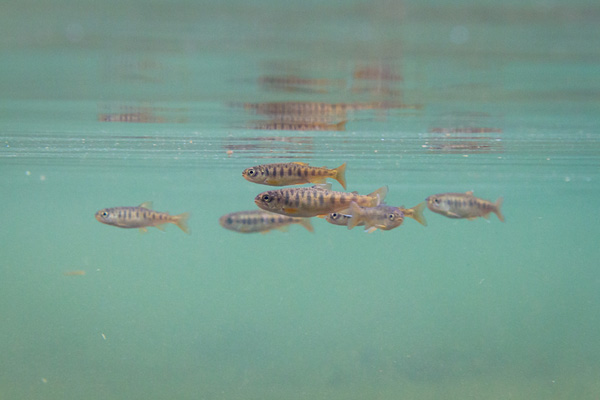
Or farther: Armstrong and Schindler found coho salmon filled with eggs up to 1 kilometer away from spawning salmon. That’s a long distance for a finger-sized fish.
What it means for conservation: There is a common maxim that if you protect habitat for spawning salmon, you have protected the habitat for everything.
Well, yes, to a point. But as this research shows, protecting spawning and migration habitat is not enough for the ecosystem. There needs to be habitat diversity, including floodplains and side channels representing a variety of water temperatures.
Take away that floodplain, and fish still have plenty of food, but no place to digest it.
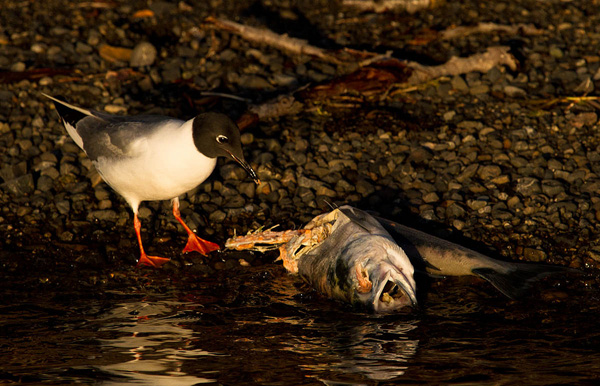
Grizzly Bears, Bald Eagles and Gulls: A Moveable Feast
Any viewer of nature documentaries has seen dozens of grizzly bears (also commonly called Alaskan brown bears) lined up to gulp down salmon. Other wildlife, like bald eagles and gulls, also join the buffet line when the salmon are running.
But the bears and birds don’t just make an appearance at one stream. They track the resource across different streams and rivers.
Salmon spawn in different streams at different times. Armstrong, Schindler, William Leacock and Will Deacy demonstrated that predators track these resource waves, moving from one to the next.
“In one system, the stream where salmon spawned latest in the season did not have a lot of fish,” says Armstrong. “But when we flew over it, there were 70 grizzly bears congregated along it.”
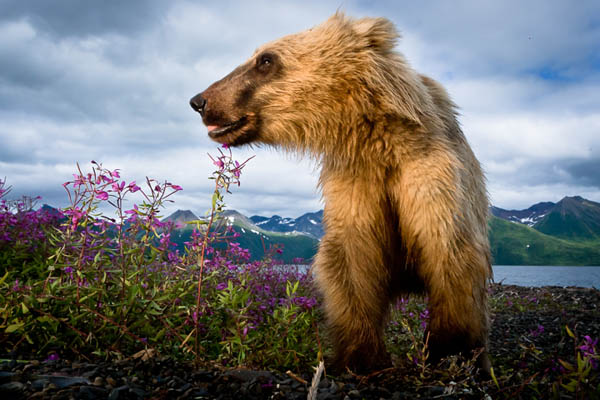
Although this has not been formally documented before, it may seem like common sense. Grizzly bears go wherever the salmon are? Of course!
But the implications for this could expose a major flaw in conservation planning.
What it means for conservation: To conserve salmon ecosystems, you conserve the systems with the greatest number of salmon and greatest diversity. This is the bedrock upon which conservation plans are built.
A conservation organization thus would prioritize a large river with a huge salmon run. It has lots of individuals, lots of diversity.
But that is not accounting for how other wildlife use the resource. Many species, including bears and bald eagles, don’t just focus on one stream. They need not just the most productive streams, they need streams that provide them calories early and late in the year.
“That stream with 70 grizzly bears? It probably would not come up very high if salmon rivers were prioritized, because it doesn’t have a very large run of fish,” says Armstrong. “But the timing of the run means it’s really important to bears. If you are just looking at the most productive streams, you’re ignoring the big picture.”
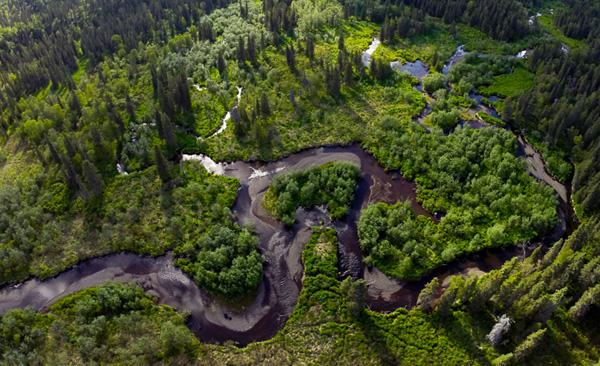
This research also suggests that conservationists should look beyond the river.
“A mine could go in between rivers and appear to have no effect on salmon,” says Armstrong. “But it might cut off the routes used by grizzly bears to get from one stream to the next.”
Salmon ecosystems are incredibly complex. Effective conservation means looking at small features – juvenile coho need warm water to digest food and grow – and large landscapes – grizzly bears need to be able to move around multiple waters.
“The river world is patchier and more unpredictable than ecologists typically assume,” says Armstrong. “Conservationists cannot just think about habitat. They have to think about what animals need to survive in a place of feast and famine.”
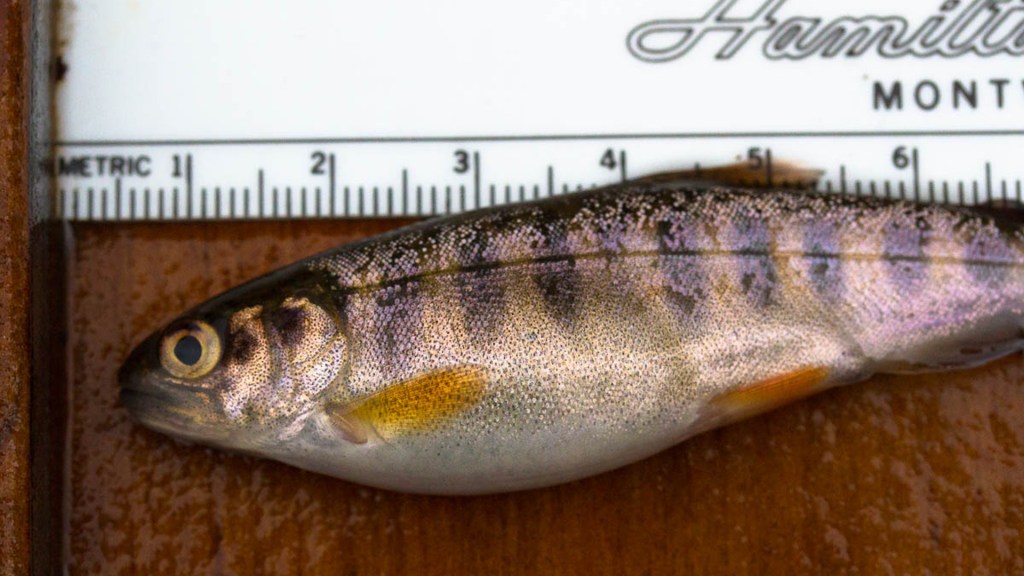



Appreciate your article Matt. Growing up being outdoors all the time I really developed an appreciated for wildlife. Hopefully all the conservation work and research reaps benefits and my grandkids will be able to enjoy many of the same things I did growing up.
Nice story Matt!
Great article, Matt. You make some really important points about the diversity of habitats and the different timing of salmon runs in different streams, and how critical it is to understand these nuances for conservation planning. And, your evocative essay brings to mind numerous personal experiences on salmon/trout/char streams. Thanks for the memories.
Thanks Matt … this sure touches on a number of critical issues in Alaska and even in Idaho where people keep finding new ways like dredging in the Salmon River, mine proposals on critical Boise River headwaters, dating the Weiser River etc. etc. to negatively impact wild fish and wildlife in general. One of my fondest memories and bunch of photos from Alaska is of the well fed bears at Crescent Lake.